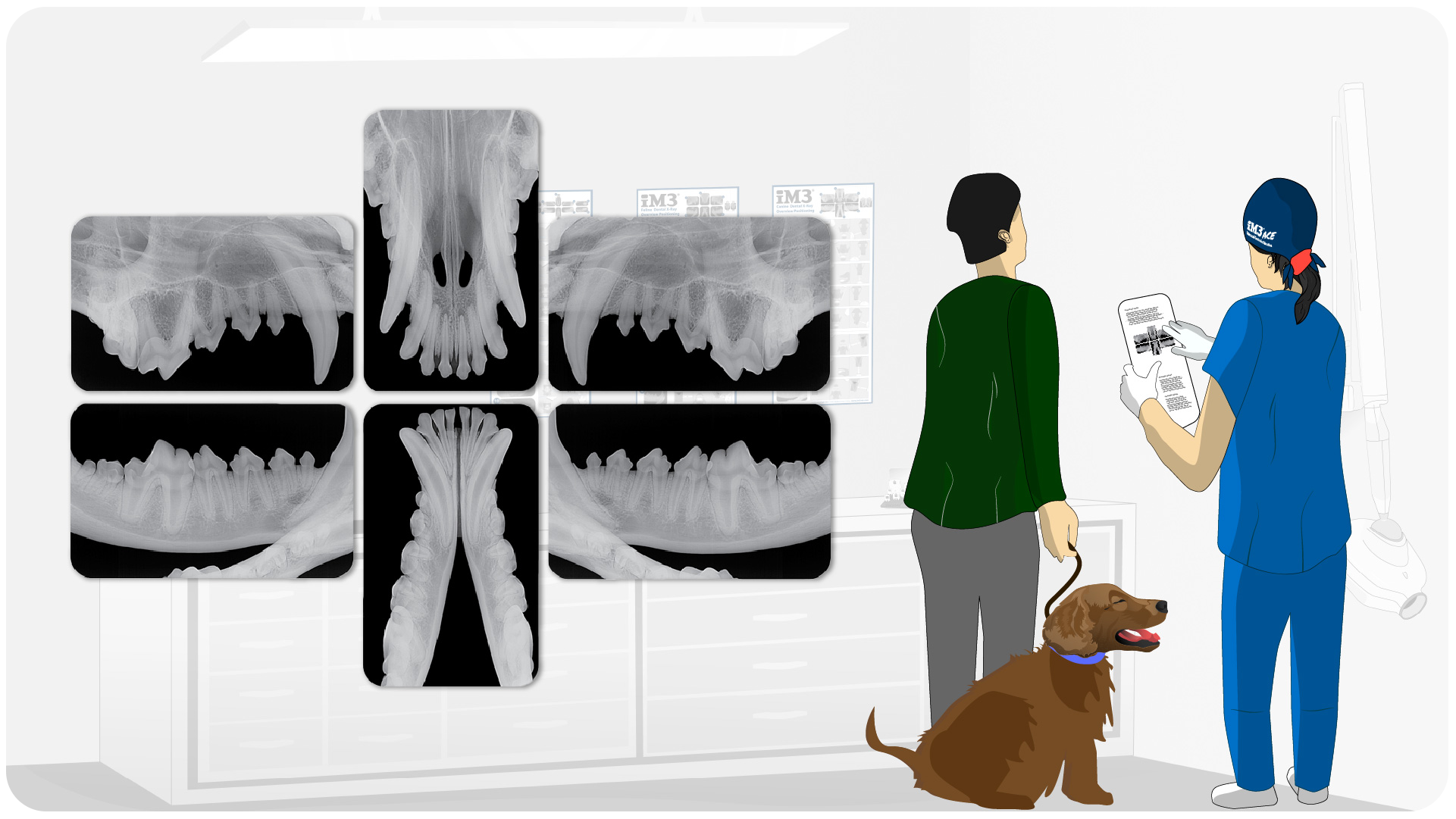Veterinary Staging
Integrating dentistry into the practice workflow is as crucial as having the right equipment.
As part of a complete solution to Veterinary Dental X-Ray, we also need to consider how to incorporate into the workflow of a typical practice.
Managing time, resources and cost is a vital part of veterinary dental treatment that improves the health and well-being of pets, owners and veterinary staff.We call this process Dental Staging and it involves breaking down necessary dental treatments into multiple appointments, benefiting both the veterinary practice and the pet owner.
With Dental Staging the vet will discuss with the owner what procedures are required and the cost after the initial examination of the patient. Then the vet will agree with the owner to spread out the procedures over a number of staged appointments, as opposed to attempting to perform all the dental treatment on the first visit.
This is beneficial to the Veterinary Practice by allowing time to be allocated appropriately, thereby maximizing the practice scheduling.
Veterinary practices benefit from better time management and increased productivity, which also leads to higher revenue. On the other hand, pet owners find staged treatments financially more manageable as costs are spread across several appointments.
Moreover, the risk of complications from anesthesia is significantly reduced as each session lasts for only two hours.
Why incorporate Staging into your practice?
- Improved Time Management
- Prioritizes Animal Health
- Financially Manageable for Owners
- Enhanced Acceptance of Treatments
- Better Detection of Dental Issues
- Decreased Stress
- Increased Revenue
- Reduced Anesthesia Risk
Are there risks to the Animals Health
from Anaesthesia?
Studies show there is only an increased risk to the health of the animal if put under anaesthesia for longer than 2 hours. Therefore, by staging the procedures into separate visits of 2 hour sessions, the use of Anaesthetic is limited to one per session, and so significantly lowering the risk.
Integrating X-Ray dental staging in veterinary practices decreases stress for both the pet owner and the practice itself. It increases the likelihood of pet owners accepting treatments and maximizes the identification of dental issues, potentially overlooked in a single appointment.
While anesthesia is beneficial in veterinary medicine, it carries risks. Studies reveal that prolonged exposure to anesthesia can lead to complications. Therefore, X-Ray dental staging aims to limit anesthesia use, thus minimizing the risk of complications and prioritizing the pet's health.







